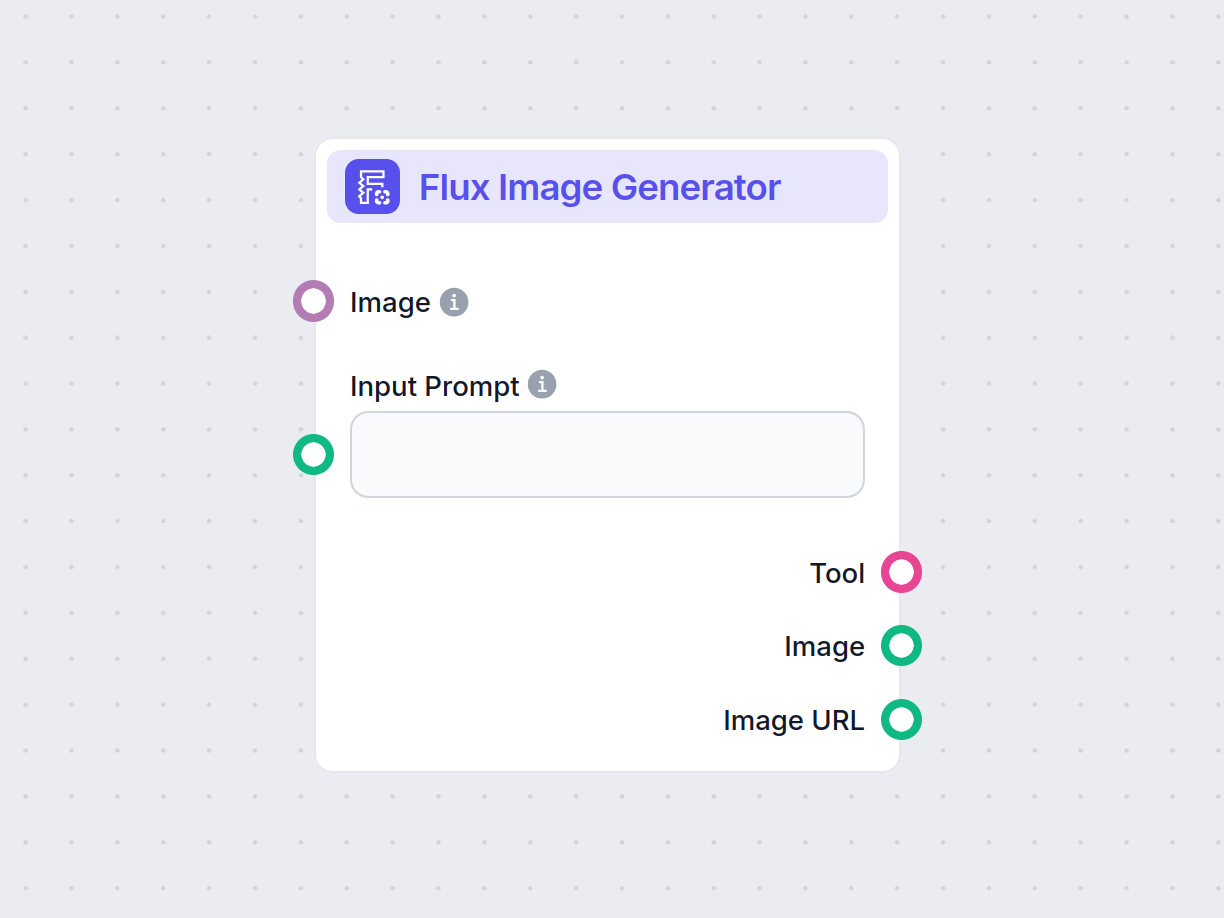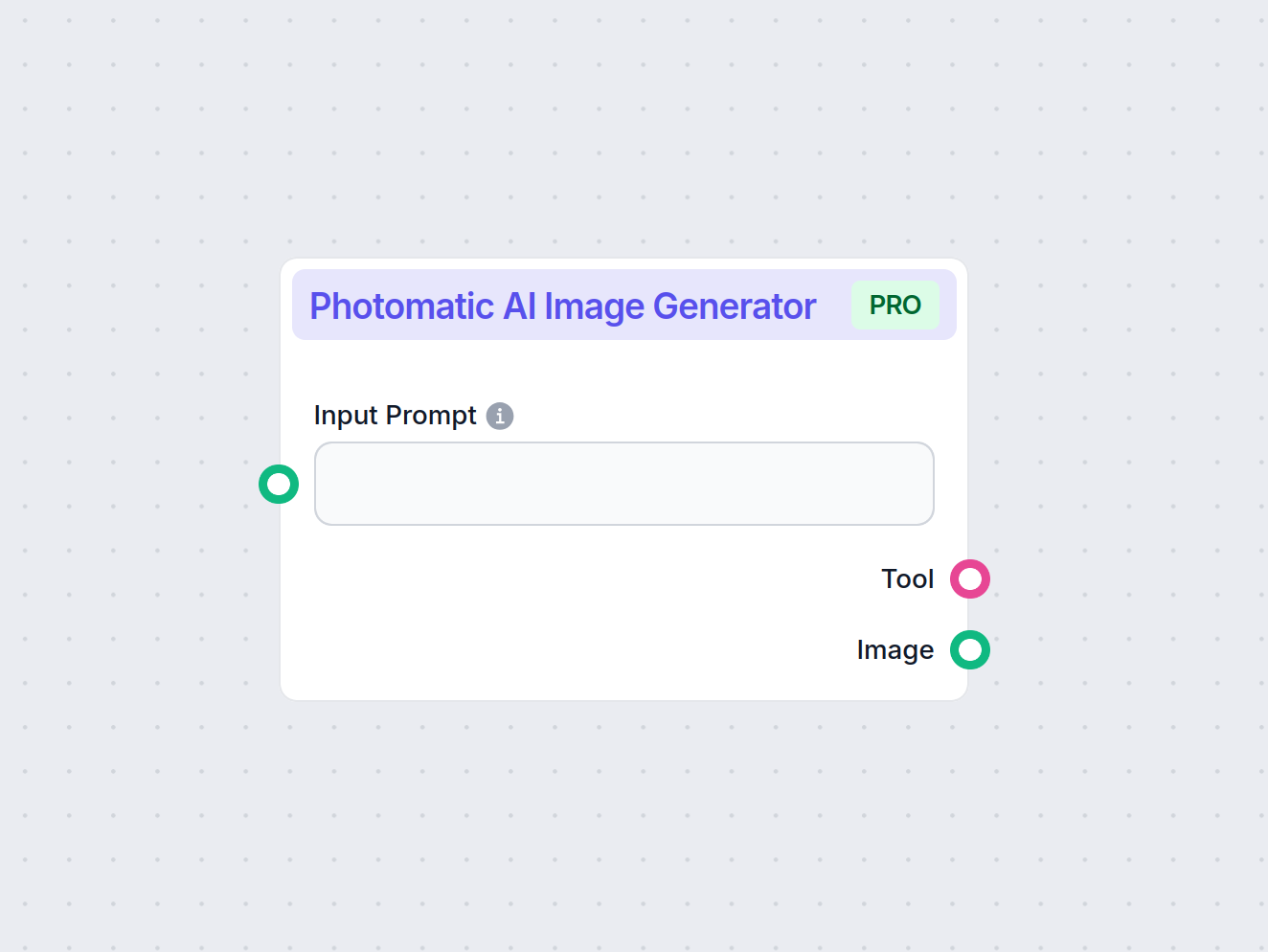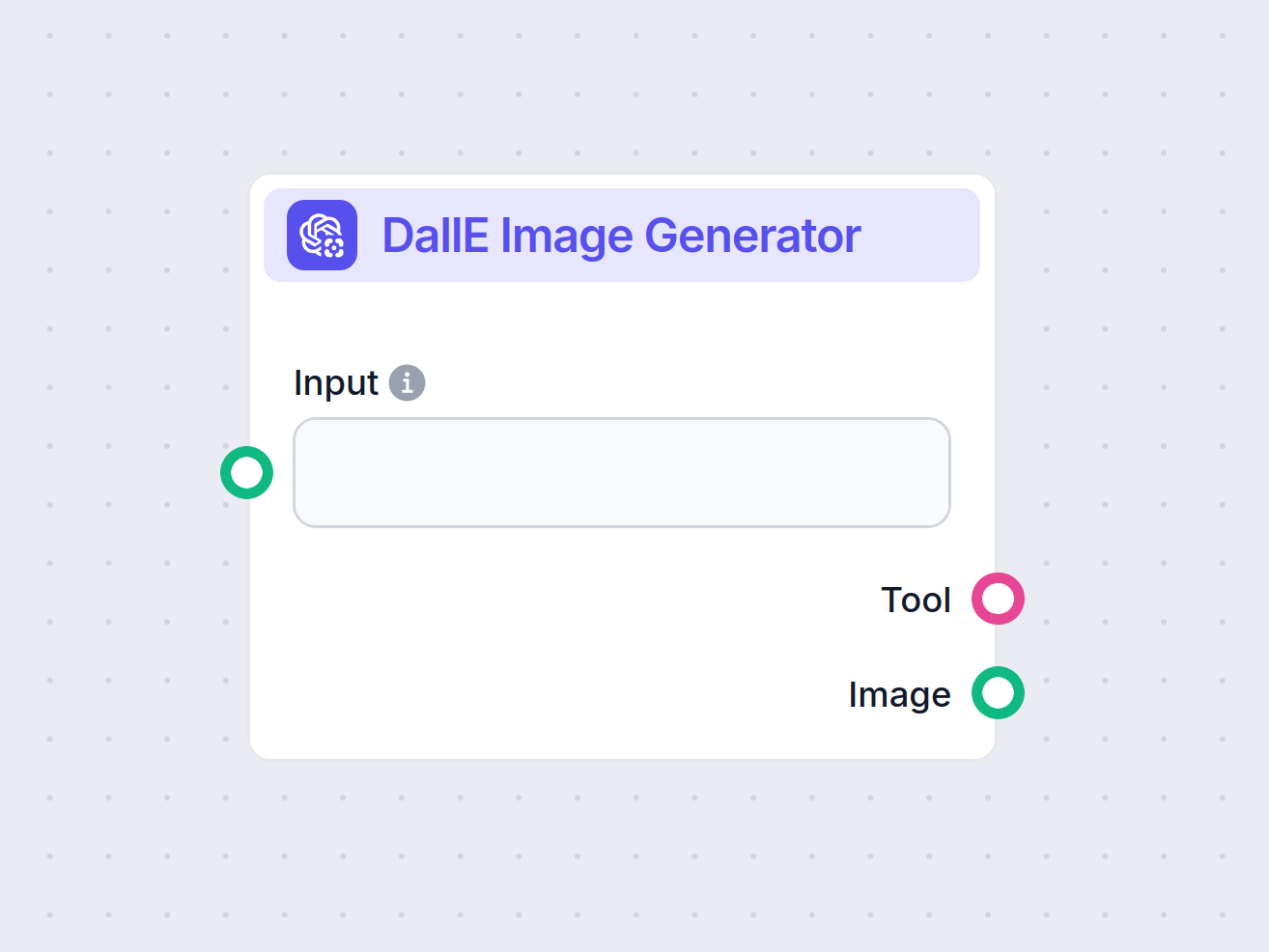
Flux Bildgenerator
Erzeugen Sie beeindruckende Bilder aus Texteingaben mit der Flux Bildgenerator-Komponente in FlowHunt. Passen Sie das Ergebnis mit Modellauswahl, Bildformat und...
Komponentenbeschreibung
The Stability AI Image Generator component enables you to generate images using the Stable Diffusion models from Stability AI. This component is ideal for workflows where you wish to convert text prompts into images, making it especially useful for creative, design, or prototyping tasks in AI-powered pipelines.
This tool leverages the power of state-of-the-art diffusion models to create detailed images based on textual descriptions. By specifying your requirements through several configurable parameters, you can customize the image generation process to suit a wide range of applications, such as creating illustrations for content, generating assets for games, or experimenting with AI-driven art.
The component offers a range of inputs to fine-tune the image generation process:
| Input Name | Type | Description | Default/Options |
|---|---|---|---|
| Input | Text | The text prompt describing the image you want to generate. | (User-defined) |
| CFG Scale | Integer (1-20) | Classifier-Free Guidance scale. Influences how closely the output matches the prompt (info). | 10 |
| Steps | Integer (1-50) | Number of denoising steps used during image generation (more steps can improve quality). | 50 |
| Image Size | Dropdown | The resolution of the output image. | 1024x1024, 512x512, 256x256 |
| Model | Dropdown | Choice of Stable Diffusion model for generation. | sd3.5-medium, sd3.5-large, sd3.5-large-turbo |
| Tool Name | Text | (Advanced) Custom name to refer to this tool in agent-based workflows. | (Optional) |
| Tool Description | Text (multiline) | (Advanced) Description to help agents understand how to use this tool. | (Optional) |
| Verbose | Boolean | (Advanced) If enabled, will print verbose output for debugging. | false |
After processing, the component provides several outputs:
| Output Name | Type | Description |
|---|---|---|
| Tool | Tool | Reference to the image generation tool instance, useful for agent-driven workflows. |
| Image | Message | The generated image, typically as a file or binary content. |
| Image URL | Message | A URL pointing to the generated image, which can be embedded or shared. |
The Stability AI Image Generator is a versatile and powerful component for turning text prompts into images using cutting-edge AI models. Its flexible configuration and integration options make it a valuable tool in any AI workflow focused on creativity, automation, or content generation.
Er erzeugt Bilder auf Basis Ihrer Texteingaben mit fortschrittlichen Stable Diffusion-Modellen, sodass Sie KI-generierte Bilder direkt in Ihre Workflows integrieren können.
Ja, Sie können die Bildgröße festlegen, aus unterstützten Stable Diffusion-Modellen wählen, die CFG-Skala anpassen und weitere Parameter für individuelle Ergebnisse einstellen.
Diese Komponente eignet sich ideal zur Erstellung von KI-Kunst, zum Generieren von Bildern für Chatbots, zur Inhaltsautomatisierung und für jeden Workflow, in dem dynamische Bilderstellung benötigt wird.
Die Komponente liefert Ausgaben als Bilder und Bild-URLs, sodass Sie die Ergebnisse einfach in verschiedenen Anwendungen und Abläufen verwenden können.
Es ist keine Programmierung nötig. Sie können die Komponente visuell innerhalb Ihres Workflows konfigurieren und die Einstellungen an Ihre Bedürfnisse anpassen.
Erstellen Sie beeindruckende Bilder aus Text mit der Stability AI Bildgenerator-Komponente. Beginnen Sie noch heute mit dem Aufbau visueller Workflows.
Erzeugen Sie beeindruckende Bilder aus Texteingaben mit der Flux Bildgenerator-Komponente in FlowHunt. Passen Sie das Ergebnis mit Modellauswahl, Bildformat und...
Entdecken Sie die Photomatic KI-Bilderzeuger-Komponente – verwandeln Sie Text-Eingaben in hochwertige, KI-generierte Bilder mit fortschrittlichen Modellen, anpa...
Nutzen Sie die DallE Bildgenerator-Komponente, um aus Texteingaben direkt in Ihrem Workflow Bilder zu erstellen. Angetrieben von OpenAIs DALL-E-Modellen ermögli...
Cookie-Zustimmung
Wir verwenden Cookies, um Ihr Surferlebnis zu verbessern und unseren Datenverkehr zu analysieren. See our privacy policy.

